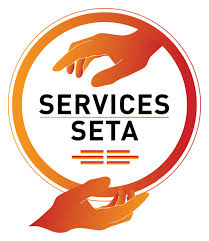Finding employment in South Africa can be challenging, especially for young people and graduates with little to no work experience. To address this issue, the government, through the Sector Education and Training Authorities (SETAs), provides funded programmes that help job seekers gain skills, workplace exposure, and employment opportunities.
If you are unemployed and looking for a chance to gain work experience or enter the job market, SETA-funded employment initiatives may be the right path for you. This guide explains what SETA funded employment is, who qualifies, and how you can apply in 2025.
What is SETA Funded Employment?
SETA funded employment refers to opportunities provided by SETAs that combine skills development with workplace exposure. These opportunities often include:
- Learnerships – structured learning combined with on-the-job training.
- Internships – workplace-based experience for graduates.
- Apprenticeships – technical training for skilled trades.
- Skills programmes – short courses designed to address specific skills gaps.
All of these programmes are fully or partially funded by SETAs, meaning participants do not pay for training. Instead, they often receive a monthly stipend while gaining valuable skills and experience.
Why Consider SETA Funded Employment?
Many South Africans apply for SETA programmes each year because they provide life-changing opportunities. The benefits include:
- Stipend or allowance during the training period.
- Nationally recognised qualifications or certificates.
- Practical workplace exposure.
- Improved employability after completing the programme.
- Opportunity to transition into permanent employment.
In short, SETA-funded employment offers a bridge between education and real-world work.
Who Qualifies for SETA Funded Employment?
Each SETA programme has its own requirements, but generally, you must:
- Be a South African citizen with a valid ID.
- Be unemployed at the time of application.
- Be between the ages of 18 and 35 (some programmes allow older applicants).
- Hold a Grade 12/Matric certificate for entry-level programmes.
- Hold a tertiary qualification (diploma/degree) for graduate internships.
- Meet the specific requirements of the SETA programme (e.g., drivers license, medical fitness, or technical subjects).
Steps to Apply for SETA Funded Employment
Now that you know what SETA funded employment is and who qualifies, let’s go through the step-by-step process of how to apply.
Step 1: Identify the Relevant SETA
South Africa has 21 SETAs, each responsible for a specific sector of the economy. For example:
- BANKSETA – Banking and finance.
- CETA – Construction.
- ETDPSETA – Education, training, and development.
- HWSETA – Health and welfare.
- MICTSETA – Media, information, and communication technology.
- MERSETA – Manufacturing, engineering, and related services.
Visit the official SETA website for your sector to check available opportunities.
Step 2: Prepare Your Documents
Most SETA applications require the following:
- Certified copy of your South African ID.
- Certified copy of your Matric certificate.
- Certified copies of tertiary qualifications (if applicable).
- Updated Curriculum Vitae (CV).
- Proof of residence (not older than 3 months).
- Motivational letter (sometimes required).
Ensure your documents are clear, up to date, and certified at a police station or Commissioner of Oaths.
Step 3: Search for Opportunities
You can find SETA-funded employment opportunities in several places:
- The official SETA websites.
- Government platforms like SA Youth.
- Career portals such as Careers24, PNet, Indeed, and LinkedIn.
- Newspapers and municipal notice boards.
- University or TVET College career centres.

Step 4: Complete the Application
Applications are often submitted online, but some SETAs may still allow email or hand-delivered applications.
When applying:
- Fill in the application form accurately.
- Attach all required documents.
- Use the correct reference number for the programme.
- Proofread your CV and motivational letter for errors.
Step 5: Attend Assessments and Interviews
If shortlisted, you may be invited to:
- Complete an aptitude test or assessment.
- Attend an interview.
- Provide additional documents for verification.
Be prepared, professional, and punctual.
Step 6: Acceptance and Placement
If successful, you will receive:
- An acceptance letter or contract.
- Details about your stipend.
- Information on your training provider and work placement.
Congratulations—you are officially part of a SETA-funded programme!
Tips for a Successful Application
- Apply early – Deadlines are strict, and late applications are not considered.
- Tailor your CV – Highlight skills relevant to the programme.
- Write a strong motivational letter – Explain your passion, career goals, and why you deserve the opportunity.
- Stay organised – Keep copies of your applications and reference numbers.
- Stay alert for scams – SETA programmes are free; you should never pay to apply.
Common Challenges and How to Overcome Them
- Competition is high: Thousands of applicants apply for a limited number of spots. Solution: Apply to multiple SETAs and keep improving your skills.
- Lack of internet access: Use public libraries, community centres, or friends’/family’s devices to apply online.
- Unclear requirements: Always read the advert carefully and ask the SETA for clarity before applying.
Conclusion
Applying for SETA funded employment in South Africa is a smart step for unemployed youth and graduates looking to build their careers. These programmes provide financial support, valuable work experience, and nationally recognised qualifications that make you more employable.
By following the steps outlined in this guide—identifying the right SETA, preparing your documents, applying on time, and preparing for interviews—you can increase your chances of being selected.
Remember, opportunities like these are designed to help you grow, gain confidence, and contribute positively to South Africa’s economy. If you’re serious about your future, don’t wait—start your SETA application today.
